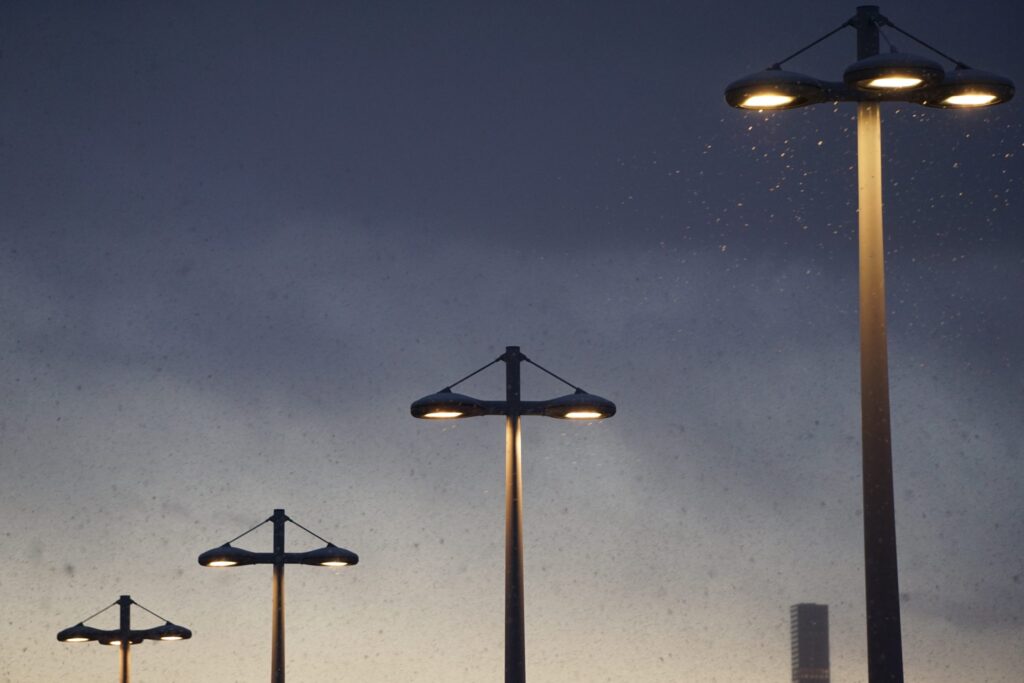Solar energy is an important source of renewable energy that is currently being harnessed using a wide range of ever-evolving technologies. One such emerging technology is the use of solar energy to power Light Emitting Diode (LED) street lights. Since solar power is a clean, inexhaustible, and affordable means of electricity, our reliance on it will have huge long-term benefits. The benefits of using solar-powered LED streetlights are many, but a few key perks are:
Reduced Dependence on Conventional Energy Sources
Our dependence on conventional energy sources is fueling the global climate crisis. We have to start looking at alternative methods of power. Solar-Powered streetlights are one such alternative that can help in reducing carbon emissions. They are powered by PV panels rather than electricity from the grid, have rechargeable in-built batteries, and also smart batteries that power their sensors. All these components are integrated into a single unit which ensures wireless connections and no accidental threats like electrocution.
The Conservation of Energy
A new programme launched in 2015 by Energy Efficiency Services Limited (EESL), called the Street Lighting National Programme (SNLP), has replaced over 50 lakh streetlights in over 500 cities in India, leading to the 135 crore kWh of energy savings. This goes to show us that solar-powered lights are a better investment to look into to conserve our energy usage. By 2019, SLNP aims to replace all the 1.34 crore conventional street lights in India. If this goal is reached, it will enable peak demand reduction of 500 MW, annual energy savings of 190 kWh, and reduction in 15 lakh tonnes of CO2.
A Cost-Effective Solution
Although the initial setup cost of solar street lights is more than the cost of conventional streetlights, solar street lights turn out to be a better investment at a cheaper cost if the total money shelled out over the long run is considered—from money spent on installation and maintenance to lamp replacements. Also, no electric pole setup is required, which can be expensive in the case of conventional street lights. The SNLP programme calculated cost savings of INR 742 crores per year till 2019.
Long-Lasting Lifespan
The average lifespan of an LED street light is ten times more than that of a conventional street light. This stems from the fact that there will be no grid-failure related stoppages and the fact that it is almost maintenance-free. The only needs will be to check if the PV panel is dust-free from time-to-time and to replace the rechargeable batteries if need be.
Automatic Battery Management System
The in-built battery management system will monitor and control all the sensors like the night sensors and motion sensors. During the first five hours of the night, the system works at normal brightness and subsequently, the intensity of the light decreases till dawn or till the Passive Infrared Sensor (PIR) is activated by human movement. This means that when people are within a certain radius away from the light, it automatically turns to full brightness.
Wide Variety of Choices
The varied range of street lights available include lights of different sizes, shapes, types, styles, and features. The LEDs in the street lights can also be coloured to resemble sunlight as closely as possible. This will help increase night-time visibility as compared to conventional street lights that usually have metal halide lamps which are less powerful and offer less visibility.
Currently, Andhra Pradesh is in the lead with about 2.5 million street lights installed as of April 2019, followed by Gujarat and Rajasthan with 1.1 million and 1 million street lights installed respectively. The progress in LED street light installation under SNLP is done with no upfront cost to the municipalities and is displayed below.
The next phase in EESL is to adopt “smart light deployment”. These are smart lights connected to a web-based monitoring system that enables remote operations and additional operational savings.
Smart solar-powered street lights will help curb carbon emissions significantly, and once smart sensors are installed on these lights, they will have the potential to be able to connect to power meters and traffic signals so that they all work together in conjunction. This will not only help with energy savings but will also streamline operations to make citizens happy. In conclusion, with an annual power shortfall of about 4%, India needs to cement its position among the strongest economies in the world. Solar LED technology is an important tool to help us realise this dream.

